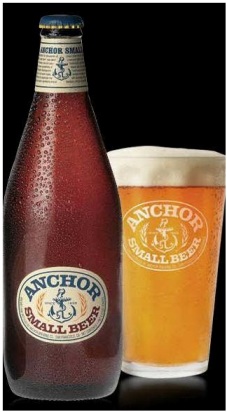 Small Beer, also called Small Ale, was the typical beer of Colonial America. Because water supplies were often contaminated, it made sense to make beer for every segment of society, including children and laborers. The boiling process made it safer, while the production of alcohol further contributed to the safety of product. Observing the superior health enjoyed by the wealthier classes who drank alcoholic beverages, the less privileged followed suit to ensure strength and robust well-being.
Small Beer, also called Small Ale, was the typical beer of Colonial America. Because water supplies were often contaminated, it made sense to make beer for every segment of society, including children and laborers. The boiling process made it safer, while the production of alcohol further contributed to the safety of product. Observing the superior health enjoyed by the wealthier classes who drank alcoholic beverages, the less privileged followed suit to ensure strength and robust well-being.
Small beer was not always produced in the same way, but three different processes resulted in beer with low alcohol levels. Usually unfiltered, they were boiled with grains, bran, molasses, roots, and herbs. They were a bit like thinned porridge and would commonly be part of the breakfast meal. This style of beer was documented in the Autobiography of Benjamin Franklin.
Another process used to produce small beer was with the second or third runnings of a strong beer mash. This technique was called parti-gyle brewing. In this process, the strongest wort was drained off to make a beer for the most prominent people in the town or village, typically politicians and wealthy land owners. This resulted in a barley wine style beer, fermented in wood marked with XXX, and was called the first sort. This was also referred to as stock ale, Scotch ale, Barton ale, Stingo, or old ale. The same mash was used several times by adding more water to the spent grain, with each subsequent batch becoming weaker. Typically, the third batch was given to women, children and servants. This was Small Beer.
Today, this technique is most common among all-grain home brewers who want to produce a variety of beer styles using the same mash. A few commercial breweries use the second runnings as well. Anchor Brewing in San Francisco, California makes Anchor Small Beer, an English Bitter at 3.3% ABV. This beer, brewed with the second runnings from Old Foghorn Barleywine, is bright amber, with a pearly white head that stays around for the “parti.” (Pardon the intended pun.) It is yeasty and reminiscent of pumpernickel bread, with tropical/citrus notes and a thin mouthfeel. Although this is categorized as an English Bitter, it has diminished flavors and a lightness that distinguishes it as a small beer.
Cismontane Brewing Company of Rancho Santa Margarita, California also makes a Small Beer, an American Stout at 3.5% from the second runnings of Black’s Dawn Imperial Coffee Stout. This beer is dry hopped, then flavored with coconut, resulting in a satiating beer that is light on the palate, with flavors of mocha, coconut, vanilla, and lactose.
The third technique for making small beer was by adding an additional step during brewing that removed the alcohol. This was used during Prohibition by companies that produced mass-market beers. These beers were called Near Beer, and had lower alcohol levels than small beer, less than .5% ABV. They were made from malt, and were properly labeled “cereal beverage.” Although lacking in flavor, nearly 300-million U.S. gallons were produced in 1921-22, the first two years after prohibition went into effect, but diminished to 86-million gallons by 1932, the year before the 21st Amendment repealed the Volstead Act.
The most popular Near Beers were: Bevo, made by Anheuser-Busch; Vivo by Miller Brewing Company; Pablo by Pabst; and Famo by Schlitz. As the opposition to teetotalism grew, it became common practice to illegally turn these beers into “needle beer” – a process that injected alcohol through the cork of the bottle or keg, using a needle. “Spiked" eventually became part of common usage, and was used for any drink that had alcohol added.
Cheers!
Photo courtesy of Anchor Brewing Company
Your own personal beverage center:
Danby DBC120BLS Beverage Center - Stainless Steel
Pour yourself a beer flight:
Libbey Craft Brews Beer Flight 6-Ounce Clear Pilsner Glass Set, 5-Piece

Printer Friendly Version

